Ecopiakos Ecological Solutions - VAT 05534520878
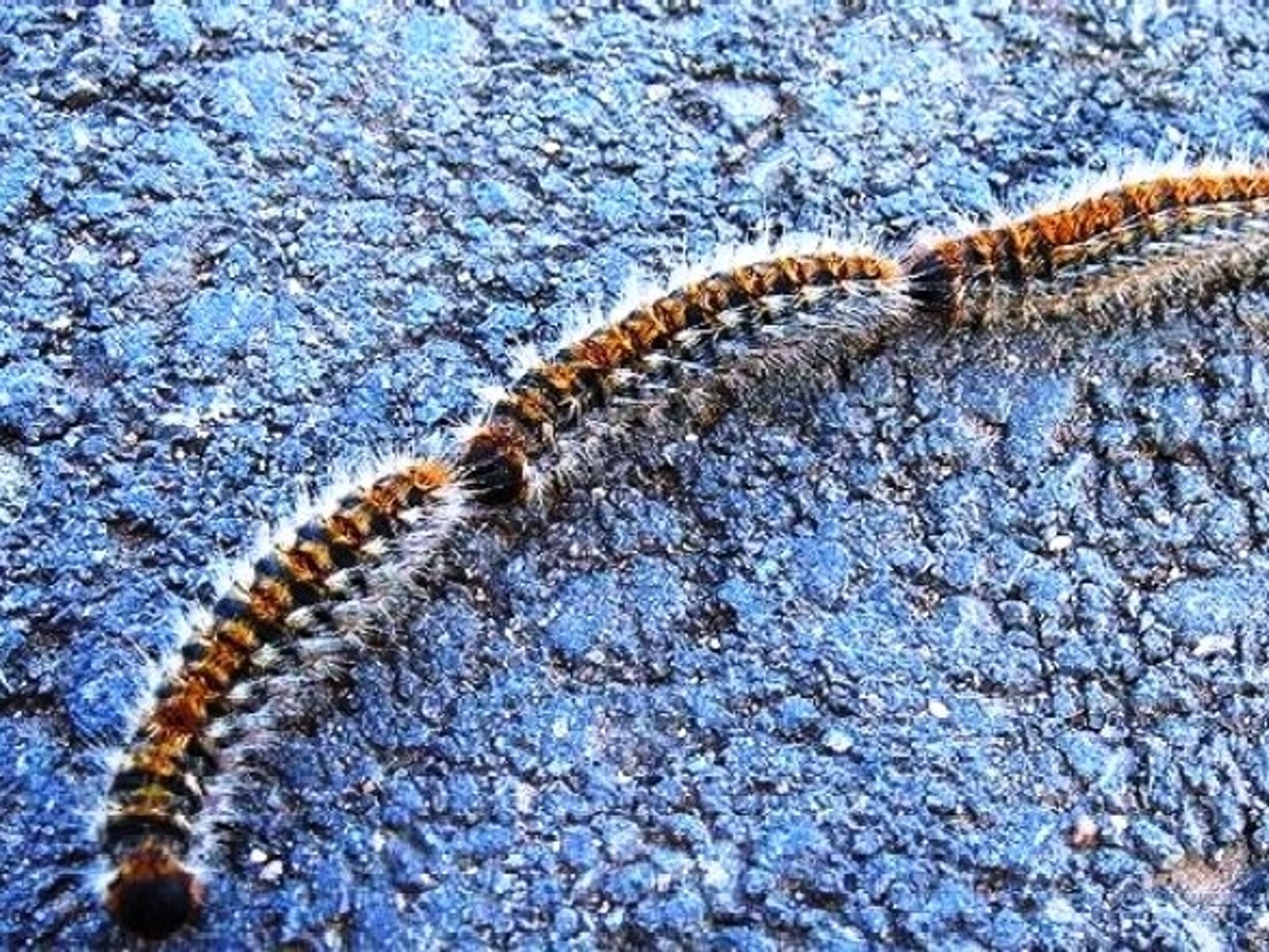
Pine processionary
The Pine Processionary is a moth whose larvae (or caterpillars) develop on conifers, especially pines, causing damage to the plants and triggering epidermal and allergic reactions in people and warm-blooded animals. The larvae of the Pine Processionary are present on the plants from autumn until the following spring, when, upon reaching maturity, they descend along the trunks in long lines and burrow into the ground to first transform into chrysalises and then into adults. The appearance of these adults occurs in summer, but a variable proportion of chrysalises can halt their development and give rise to adults after a varying number of years.
While in autumn it is difficult to spot the first nests formed by the larvae by gathering some needles with a loose web of silky threads, in winter the presence of this insect is easily detectable due to the conspicuous large whitish overwintering nests, built on the sunniest part of the crowns of the infested plants.
The gregarious larvae move in long, characteristic lines in which each individual remains in contact with the one in front. The mature larvae have a black head and a dorsally grayish body, on which the reddish-brown tufts of urticating hairs stand out: on the sides there are long whitish hairs and the color tends to yellowish.
The damage caused by the pine processionary on pines
The pine processionary causes damage when it is in the larval stage. Adult moths, although bothersome, do not cause direct problems. On trees, the damage varies depending on the age of the larva and can be of different intensity.
Young larvae, those that form in the summer period, attack the leaves, which are needles. All that remains after their attack is a thread corresponding to the central vein of the pine needle. This then becomes necrotic and dries out and is used by the larvae to reinforce the nest.
Adult larvae, those that overwinter, are even more harmful as they completely eat the leaves, with all the needles. They cause disastrous effects if the attack is massive. Furthermore, if the attack is repeated over the years, the fate of the tree is total drying out, and therefore death.
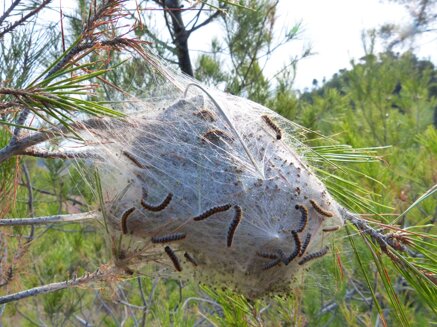
Damage caused by the pine processionary to humans
Pine processionary caterpillars require particular attention also because of the direct harm they can cause to humans. The hairs covering the upper part of the larva are highly urticating as they contain histamine, a very poisonous substance. They are released by the larvae themselves as a defense mechanism. Generally, they detach under the action of the wind, or they can fall from the nests. Since we are mainly talking about pines, firs, larches, that is, trees we may encounter in parks or forests during a walk, the fight against the processionary is made mandatory by law by various public administrations.
The hairs of this insect have a particular microscopic hook shape and adhere very well to the epidermal area. Reactions in humans vary depending on the extent and the area affected. They can range from a strong allergic reaction to anaphylactic shock!
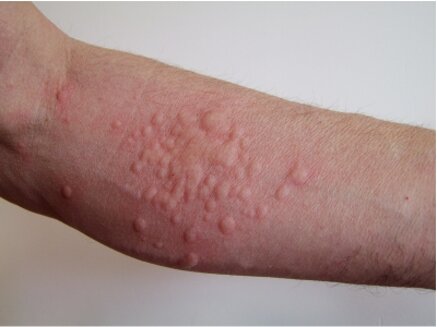

ENDOTHERAPY
Endotherapy is one of the most effective methods of combating pests such as the pine processionary: it is based on a system for the protection of plants aimed at eliminating insects, fungi, bacteria, and parasites in general, reducing the dispersion of chemicals into the environment.
Endotherapy means treating by means of active substances capable of being absorbed and translocated within the plant. It is used to indicate phytosanitary interventions by injecting into the trunk of trees with at least a 13 cm diameter, or by brushing the trunk if the plant is young and the bark is still green and able to absorb the curative product.
The endotherapeutic technique consists of injecting, directly into the trunk of the plant, a solution of insecticides proportioned in concentration and quantity to the type and size of the plant to be treated. Endotherapy exploits the circulation of sap so that the active substances can reach every part of the plant from the inside, including the leaf crown, acting on pests and fungi.
The advantages of endotherapy are numerous:
homogeneous distribution of active substances.
prolonged action over time thanks to the persistence of active substances in the sap.
elimination of the risk of product dispersion into the environment.
maximum safety for people and animals during treatments.
can be performed at any time of day without disturbing people.
elimination of the risk of phytotoxicity due to solvents that yellow and discolor leaves.
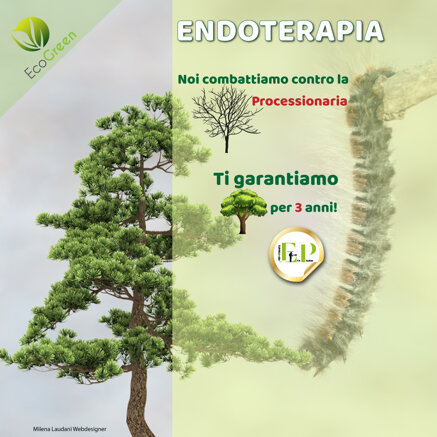
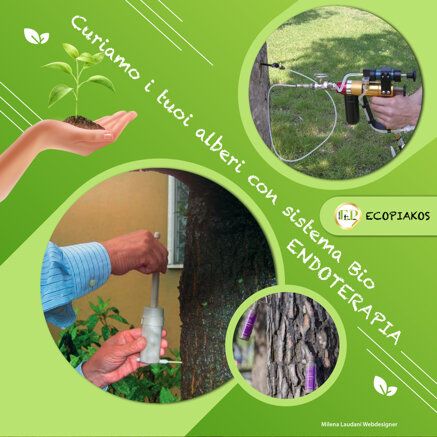
Disinfestation periods
Endotherapy should be carried out in the months of November and December, especially in areas with a Mediterranean climate. In winter (December - January - February), the collection and destruction of processionary nests is carried out; these operations must be performed with the utmost caution to avoid any contact with the urticating hairs of the larvae.
At the end of summer (late August - early September), treatments are applied to the foliage with microbiological insecticide at doses of 100 - 150 grams of product in 100 liters of water. These disinfestation treatments provide excellent results against first and second instar processionary larvae. For the disinfestation of processionary caterpillars, Ecopiakos always uses organic and eco-friendly products.
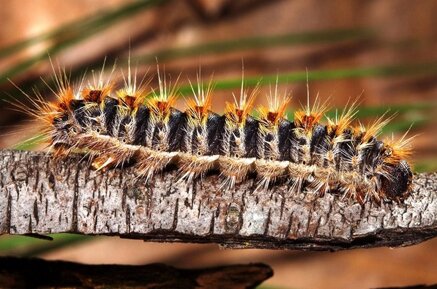
Ecopiakos Ecological Solutions - VAT 05534520878
